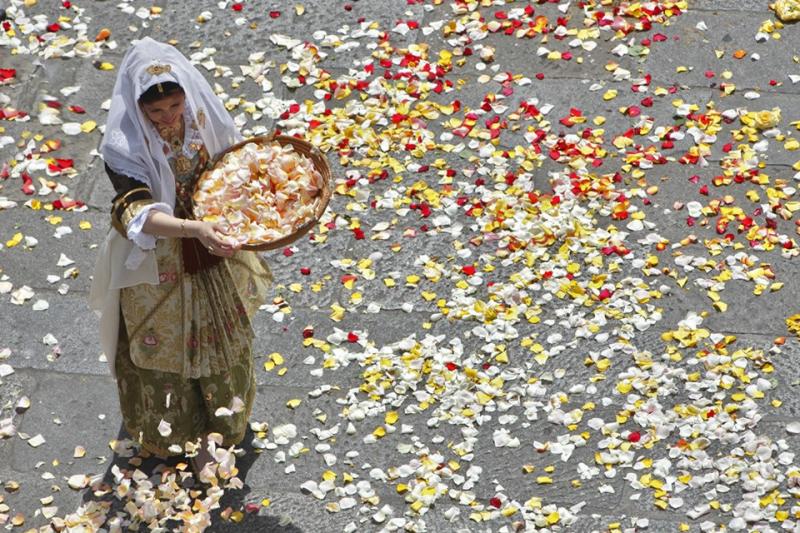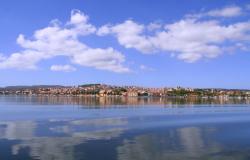The first of May is La Festa dei Lavoratori (Labor Day) throughout Italy, but in Cagliari, the day marks the beginning of the Festa di Sant’Efisio to honour the martyred saint who saved the city from the Plague in the 17th century. The celebration is one of the largest and most colourful religious festivals in the world—and also one of the longest as it lasts for four days and covers several towns.
Every 1 May, the statue of Sant’Efisio is carried on a 17th century gold-plated coach drawn by oxen from the church in Stampace, the site where the saint was kept prisoner before he was beheaded in 303; the coach is accompanied by the “Guardiania,” who wear black top hats and tails, and the music of “launeddas,” traditional Sardinian pipes.
The statue passes through the flower-lined street of Cagliari’s Via Roma (the ritual is called “sa ramadura”) and is greeted by sirens of the port’s ships. The procession then travels around the Gulf of Cagliari through the towns of La Maddalena, Su Loi, Sarroch, Villa San Pietro, and Pula, who hold small festivals featuring their own traditional costumes, along the way, until it arrives in Nora, where Sant’Efisio was killed.
On 4 May, the statue of Sant’Efisio starts to make its way back to Cagliari, guided by the faithful carrying torches.
I don’t know about you, but I really need to get to Sardinia for some of these amazing festivals!












